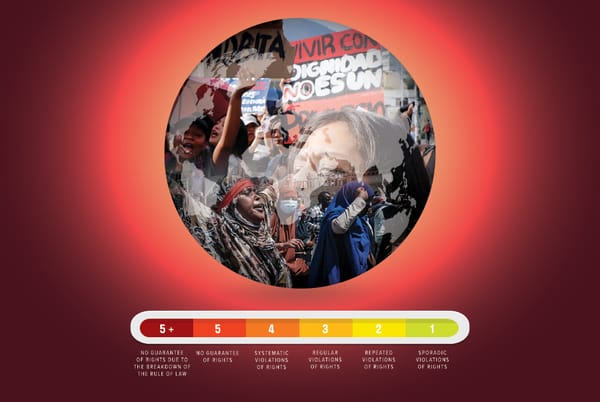
Over the past couple of years, a growing number of provincial governments have either passed or are considering passing pay transparency legislation. Canada, it seems, is following a global trend. The Canadian public, according to a recent poll, overwhelmingly supports these efforts.
Greater pay transparency is a positive development for workers and may help reduce wage inequality. But pay transparency is only a first step and shouldn’t substitute for targeted pay equity laws — as well as the extension of union membership.
What exactly is pay transparency?
Pay transparency legislation compels employers to disclose information about wages and salaries in job postings and to make salary information available to workers within firms. It also prevents employers from punishing workers who disclose or discuss their salaries with one another. In addition, governments may require employers to file periodic pay audit reports, disclosing their salary ranges and pay practices.
British Columbia passed a pay transparency law last May. From November 2023, all employers in the province must include an expected salary or salary range in public job postings.
According to the B.C. law, businesses are also barred from asking prospective employees about their pay at past employers and from punishing workers for openly discussing their pay with one another. Unfortunately, the law doesn’t currently allow for penalties against non-compliant employers.
Ontario also recently introduced its own version of pay transparency, after scrapping a previous, more expansive version proposed by the outgoing Liberal government in 2018. Ontario’s law requires salary disclosure in public job postings but doesn’t mandate salary audits or reporting. The provincial Employment Standards Act already protects employees from reprisal for disclosing or discussing salaries.
Manitoba as well looks poised to legislate pay transparency requirements. The Manitoba New Democrats twice tabled a failed pay transparency law while in opposition. Now with a majority government, the party plans to implement the law along with a suite of other labour-friendly reforms.
Since 2022, Prince Edward Island and Newfoundland and Labrador have had their own versions of pay transparency.
These pay transparency developments are the latest in the long fight for pay equity. The framework we have today for tackling pay discrimination grew out of the Canadian Human Rights Act, passed in 1977. This was the first law to address discrimination in employment, but it had several shortcomings. Relying on complaints, the law placed the onus on workers to report discrimination rather than requiring employers to proactively prevent it.
The federal Pay Equity Act, passed in 2018 and in force by 2021, was meant to create a proactive framework for promoting pay equity across gender, race, and ability. Because this is federal legislation, it only covers workers in federally regulated workplaces. Its reach is therefore limited. Some provinces have introduced their own versions of pay equity, but these are narrower and cover only public sector employees.
With stronger pay equity measures stalled across the country, pay transparency is meant to fill the gap and help address the persistent gender pay gap. Although pay transparency is a step in the right direction, stronger measures are needed to meaningfully combat wage inequality and pay discrimination.
Fundamentally, pay transparency and wage negotiation are about power.
Employers have an interest in concealing information about pay from workers. When advertising new positions, employers gain an advantage in hiring and negotiation when they are able to withhold salary information. Workers are much more dependent on finding work than employers are dependent on finding workers. Employers who conceal salary information when advertising jobs may ultimately be able to offer certain candidates much less than they originally anticipated.
Employers also benefit from concealing information about pay within workplaces. Workers without transparent information about pay within firms will be unaware of wage differentials between themselves and their coworkers. A lack of pay transparency breeds inequality and inequity. But it does provide employers with the opportunity to extract additional profit from underpaid and unaware workers.
Labour market tightness has compelled some employers to be more open about the salary offerings of advertised positions. As workers’ bargaining power improved post-pandemic, employers could ill afford to be circumspect or evasive about pay. But such voluntary transparency is likely to wane amid a softening labour market. With unemployment ticking up and job vacancies continuing their months-long fall, many employers will once again have the upper hand when it comes to bargaining over new salary offerings.
On their own, employers will conceal compensation information whenever and wherever conditions allow. The evidence suggests it requires legislative intervention to permanently change their behaviour.
According to a recent report, job postings including information about pay have more than doubled over the past five years on job search site Indeed. While some of this growth is due to a tighter labour market, much is explained by new pay transparency laws. Nearly half of postings in February 2022 contained salary information, up from only 22 per cent in early 2019. Moreover, after B.C. passed its pay transparency legislation, 76 per cent of new job postings in February contained information about wages and salaries, up from 49 per cent in the third quarter of 2023. There is still some way to go to achieve full compliance with the legislation, but progress is being made.
At the same time, some employers may be undermining the objective of pay transparency through the use of salary ranges. Brendon Bernard, senior economist at the Indeed Hiring Lab, found that in early 2024 only 21 per cent of job postings that included information about pay listed an exact salary amount, down from 40 per cent five years ago. At the same time, posted salary ranges have widened somewhat. In early 2024, the median salary range widened to 25 per cent, up from 21 per cent in 2019.
Listing a broad salary range for a posted position, while technically complying with pay transparency legislation, still leaves workers without critical information about potential pay. It also allows employers to maintain considerable flexibility in what they ultimately agree to pay new workers. Workers in weaker bargaining positions — particularly those from historically disadvantaged groups — could still find themselves earning less than their more privileged coworkers.
Nevertheless, given that pay transparency limits employer power, it won’t be surprising to see greater opposition or additional attempts to evade transparency laws.
A classic employer argument against pay transparency is that salary disclosures will generate rifts between co-workers, or between current employees and new hires. Those receiving lower pay may resent co-workers they learn are earning more. Employees may be angered to find out that new recruits are being offered higher pay than current staff. Retaining workers could become difficult under such circumstances, or so the argument goes. Some also warn of higher paid workers being required to accept wage stagnation in the name of equalization.
Individually, some higher paid workers may indeed see slower salary growth following pay transparency. But this shouldn’t distract from the fact that, collectively, workers are better off with complete information about pay scales and the ability to openly discuss them.
Evidence from other jurisdictions with recently passed pay transparency laws is beginning to bear this out. For example, Colorado saw posted wage offers increase following the passage of a pay transparency law in the state. New York City’s 2022 pay transparency law has had “spillover” effects persuading employers not covered by law to also disclose salary ranges in new job postings. Additionally, there is some evidence to suggest that pay transparency requirements encourage employers to systematize their pay practices so that internal pay scales align with new offerings.
Moreover, workers should be able to freely exercise labour market choice by leaving employers who pay them inadequately. It’s difficult to make such choices without transparent information about pay and salaries.
While pay transparency laws are a step in the right direction, they are by no means a panacea. In fact, pay transparency can be viewed as a form of light-touch regulation that seeks to address wage inequality and discrimination without imposing too great a cost on employers.
This is likely why labour organizations, while viewing pay transparency positively, nevertheless call for much greater interventions to address inequity. The BC Federation of Labour welcomed British Columbia’s Pay Transparency Act as an initial step to address pay equity, but noted that the point is not only to ‘show the gap, but to close it.’ Similarly, the Ontario Federation of Labour responded to that province’s pay transparency rule by calling for meaningful action to tackle the persistent gender wage gap.
Pay transparency is thus an inarguably positive development. Having necessary salary information allows for comparison and the identification of gender and racial pay gaps. Salary secrecy only serves to prevent pay equity and stymie the efforts of women and racialized people to fight back against wage and salary discrimination.
Yet, the surest way to achieve pay transparency is through unionization and collective bargaining. By definition, a union contract makes pay transparent. Not only this, union membership allows workers to come together and collectively negotiate their pay with the boss.
In a certain sense, pay transparency is premised on workers having correct information to ‘optimize’ their pay in the labour market. The objective of unionization, by contrast, is to take wages out of competition and to substitute democratic decision-making among workers for the cold calculation of the market.
Pay transparency, yes. But, more importantly, collective bargaining.
Recent Class Struggle Issues
- March 25 | The U.S. Is Witnessing A Considerable Growth In Strike Activity
- March 18 | Card-Check Union Certification In B.C. Has Been A Major Success
- March 11 | Doug Ford’s Failed Wage Restraint Measure Has Cost Ontario Billions
- March 4 | Collective Bargaining Rights Are Being Systematically Undermined







